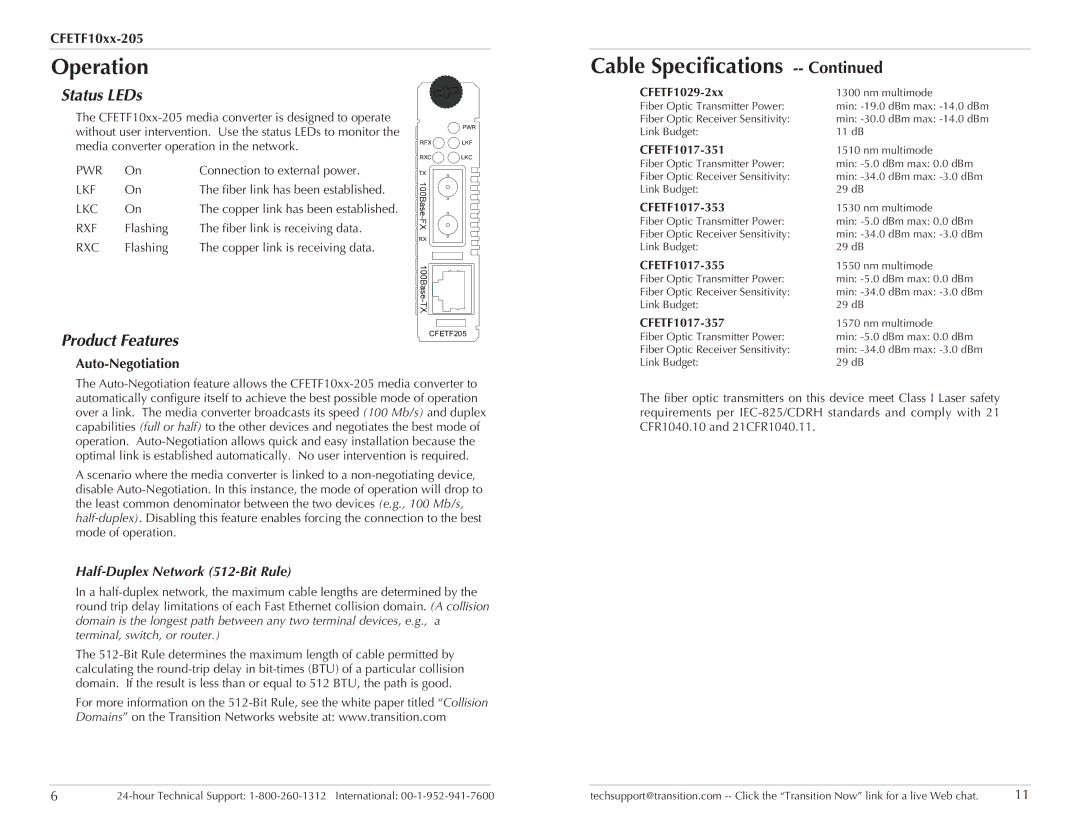CFETF1011-205 specifications
The Transition Networks CFETF1011-205 is a robust Ethernet media converter designed to bridge the gap between various networking technologies, specifically transitioning between fiber optic and Ethernet connections. This device plays a crucial role in extending the network distance while maintaining high data transmission integrity and efficiency.One of the standout features of the CFETF1011-205 is its ability to support both 10/100Base-TX Ethernet and 100Base-FX fiber optics. This versatility allows enterprises to integrate existing copper cabling with new fiber networks without the need for complete infrastructure overhauls. The media converter facilitates seamless communication between different mediums, ensuring that users can leverage the benefits of both types of cabling.
The device operates with a standard RJ-45 connector for copper connections and utilizes SC connectors for fiber optic cables. Its design supports both single-mode and multimode fiber connections, accommodating varying distances based on fiber type. Specifically, multimode fibers can reach distances of up to 2 kilometers, while single-mode applications can extend to an impressive 20 kilometers, making the CFETF1011-205 an ideal choice for both short-range and long-range connectivity needs.
Transition Networks emphasizes reliability in the CFETF1011-205 through its extensive range of diagnostic features. The built-in LEDs provide real-time status updates on power, Ethernet, and fiber link conditions. This level of visibility allows network administrators to quickly identify and troubleshoot any issues that may arise in the system.
Another significant characteristic is its compact design, which makes it suitable for installations in various environments. The device can be used as a standalone unit or mounted in a rack, providing flexibility in deployment options. Additionally, the CFETF1011-205 boasts a robust construction that ensures durability in demanding conditions.
The CFETF1011-205 complies with IEEE standards, ensuring compatibility with a wide range of networking devices. This compliance along with its simple plug-and-play setup simplifies the integration process, making it accessible even for those with limited technical expertise. Overall, Transition Networks' CFETF1011-205 media converter is a versatile and reliable solution for organizations looking to enhance their networking capabilities, extend their reach, and future-proof their infrastructure.

